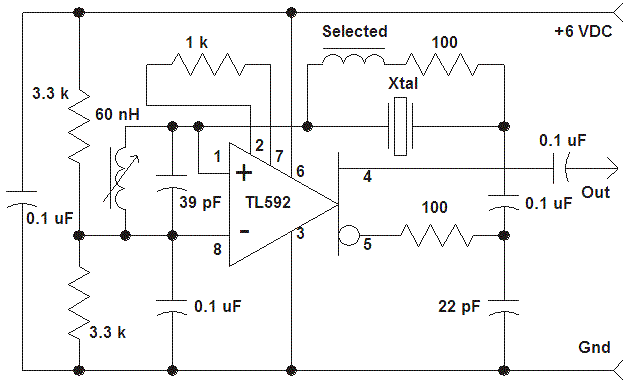

Here's an simple experimental circuit using the readily available TL592 differential amplifier. In this circuit, the overtone mode is selected by a tuned circuit between pins 1 and 8. The phase shift due to the roll-off of the amplifier, the 100 ohm resistor and 22 pF capacitor, and the frequency of the tank combine to give the necessary 180 degree phase shift. In order to prevent feedback through the crystal's shunt capacitance, a selected inductor in series with a 100 ohm resistor is placed across the crystal. The inductance should be selected to resonate with the holder capacitance of the crystal, typically 680 nH for a 100 MHz crystal. When the value is selected correctly, the oscillator will only oscillate on a crystal-controlled frequency with the oscillation dying when the tank is tuned too far from the crystal's frequency. The 100 ohm is necessary to kill the Q of the inductor.

In operation, a rather large voltage is applied to pin 1. As a result, the differential amplifier is acting like a bandwidth-limited comparator, switching as quickly as it can. The large signal helps to reduce phase noise due to the amplifier's input noise. The crystal may be tuned over a wide range by the inductor and the range is somewhat a function of the amplifier gain. The prototype would tune 30 ppm with the 1k, 15 ppm with no gain resistor, and as much as 50 ppm with a 470 ohm gain resistor. Higher gain (lower value resistor) can lead to oscillation at one of the lower frequency crystal modes. The circuit was tested with a TL592 but the lower noise TL592B should also work. The output voltage is about 1 volt p-p but an additional buffer is recommended for driving a low impedance load. A single AC logic gate could be added as in the previous circuit. The variable inductor could be replaced with a fixed value and a combination of a trimmer capacitor and fixed value could replace the 39 pF.